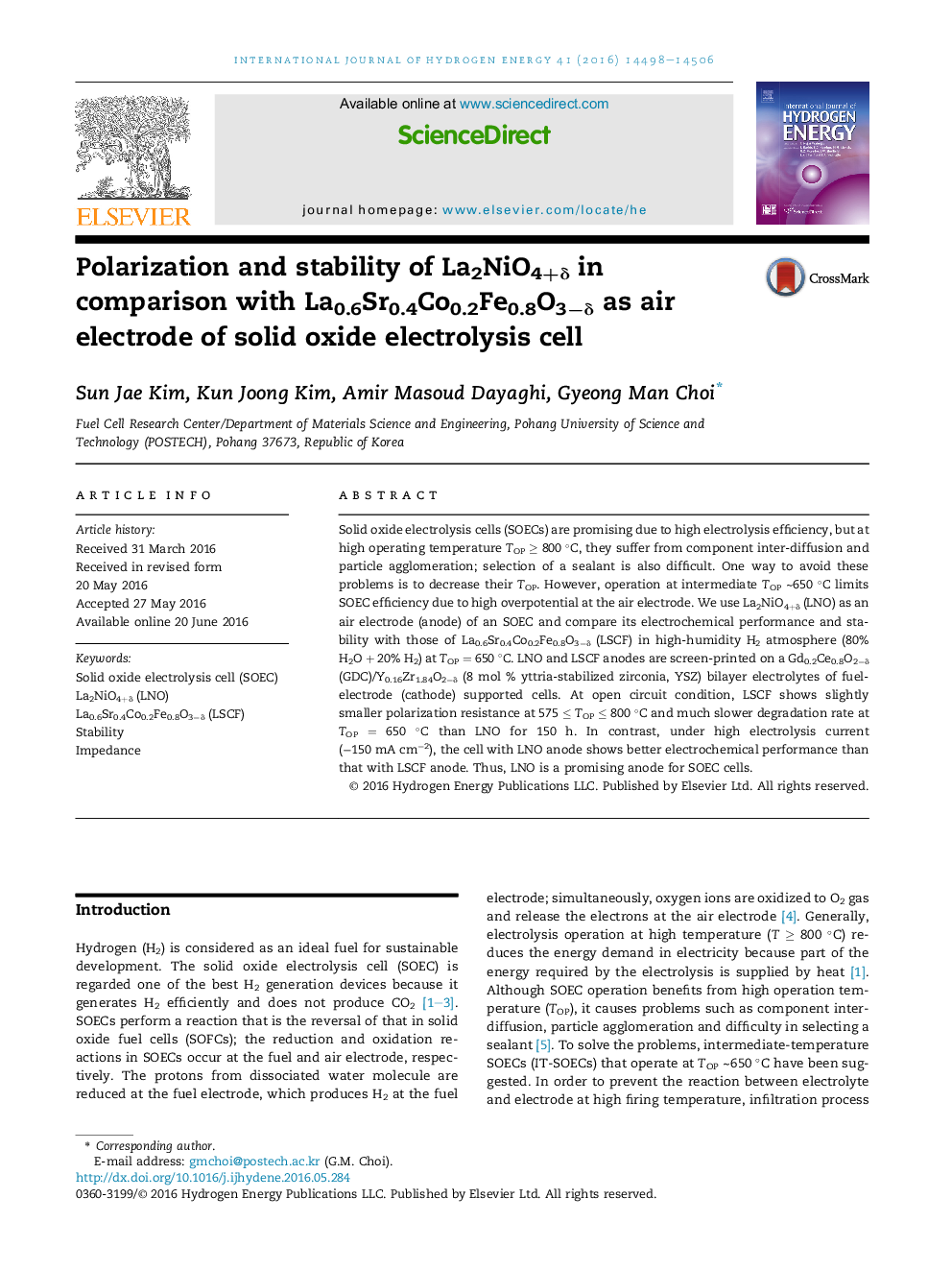| Article ID | Journal | Published Year | Pages | File Type |
|---|---|---|---|---|
| 1269328 | International Journal of Hydrogen Energy | 2016 | 9 Pages |
•La2NiO4+δ (LNO) and La0.6Sr0.4Co0.2Fe0.8O3−δ (LSCF) electrodes are compared.•Both LNO and LSCF are proper air electrodes at intermediate temperature (∼650 °C).•In fuel cell mode, LSCF shows better performance than LNO.•However, in electrolysis mode, LNO is better than LSCF.•LNO is a promising alternative anode for solid oxide electrolysis cells.
Solid oxide electrolysis cells (SOECs) are promising due to high electrolysis efficiency, but at high operating temperature TOP ≥ 800 °C, they suffer from component inter-diffusion and particle agglomeration; selection of a sealant is also difficult. One way to avoid these problems is to decrease their TOP. However, operation at intermediate TOP ∼650 °C limits SOEC efficiency due to high overpotential at the air electrode. We use La2NiO4+δ (LNO) as an air electrode (anode) of an SOEC and compare its electrochemical performance and stability with those of La0.6Sr0.4Co0.2Fe0.8O3−δ (LSCF) in high-humidity H2 atmosphere (80% H2O + 20% H2) at TOP = 650 °C. LNO and LSCF anodes are screen-printed on a Gd0.2Ce0.8O2−δ (GDC)/Y0.16Zr1.84O2−δ (8 mol % yttria-stabilized zirconia, YSZ) bilayer electrolytes of fuel-electrode (cathode) supported cells. At open circuit condition, LSCF shows slightly smaller polarization resistance at 575 ≤ TOP ≤ 800 °C and much slower degradation rate at TOP = 650 °C than LNO for 150 h. In contrast, under high electrolysis current (−150 mA cm−2), the cell with LNO anode shows better electrochemical performance than that with LSCF anode. Thus, LNO is a promising anode for SOEC cells.
